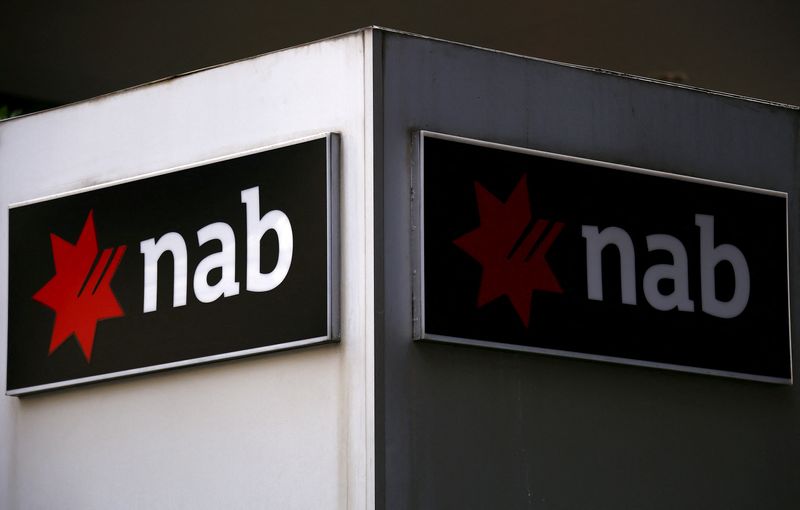By Byron Kaye and Shashwat Awasthi
(Reuters) -National Australia Bank Ltd, the country's No. 2 lender, posted a bigger-than-expected jump in first-quarter profit on Thursday as a robust property market brought a flurry of new businesses, sending its shares 4% higher.
The result caps a reporting season for the country's so-called Big Four lenders where investors have looked past wafer-thin profit margins - due to fierce competition for mortgages - and focused on the benefits as interest rates start rising, possibly this year.
Melbourne-headquartered NAB said cash earnings, a key measure of bank performance that only includes ongoing business, leapt 9.1% to A$1.8 billion ($1.3 billion) in the December quarter, from the year-ago period, topping a Morgan Stanley (NYSE:MS) estimate of about A$1.6 billion.
"NAB has started the 2022 financial year well," Chief Executive Officer Ross McEwan said in a statement alongside the limited trading update. "Asset quality remained benign and good momentum has continued across our business despite the environment remaining competitive."
Like its three main rivals earlier this month, NAB said its loan margins thinned due to competition and a shift to fixed-rate loans - which are less profitable - as customers sought to protect themselves against rising rates.
But NAB's margin narrowed the least - by five basis points, compared with 14 basis points at Commonwealth Bank of Australia (OTC:CMWAY) - and investors cheered its cost controls and positioning for when rates rise.
NAB shares rose 4.3% against a flat overall market by the afternoon. Other banking stocks were also flat.
"A bit of pressure in the net interest margin: that's fine. What a lot of them are doing is competing for market share and building their book moving into higher rates," said Hugh Dive, chief investment officer at Atlas (NYSE:ATCO) Funds Management, which holds stocks of leading banks.
"Historically rising rates are a good time for banks."
After the initial economic upheaval of the COVID-19 pandemic, Australia's banks have flourished as emergency-level interest rates and a shift to working from home fuelled an eye-popping property market rally.
Many economists had forecast a pandemic-fuelled drop in house prices, yet they soared 22% in 2021 nationwide, adding pressure on the Reserve Bank of Australia to start raising rates as soon as August.
That may also benefit banks, since higher rates allow them to pay people with deposit accounts lower interest than what they charge for mortgages and business loans.

In the December quarter, NAB said Australian home and business lending rose 2.6% and 3.4%, respectively, and loans in New Zealand grew 2.2%. Revenue from home and business lending, including fees, rose 5%.
($1 = 1.3926 Australian dollars)